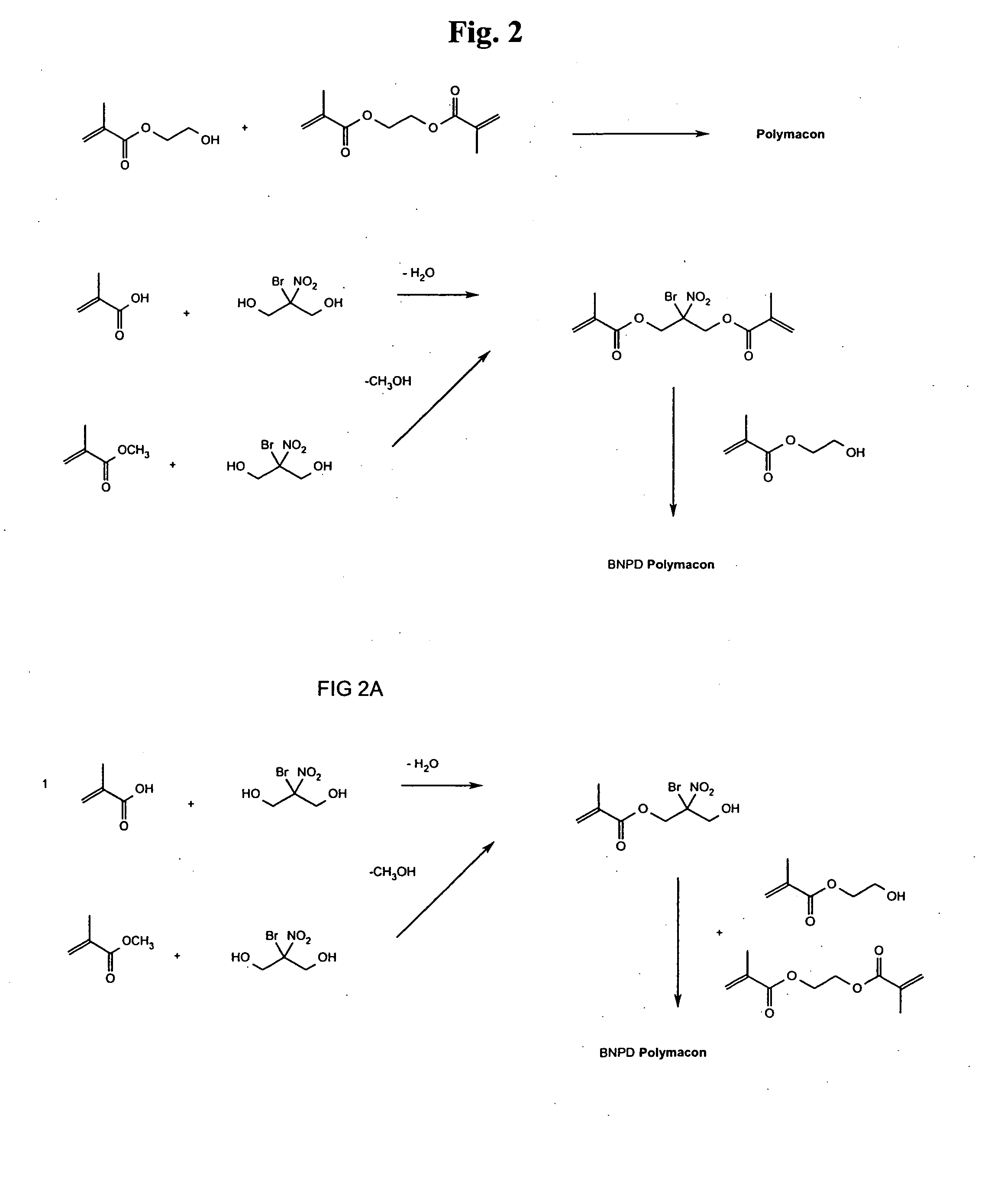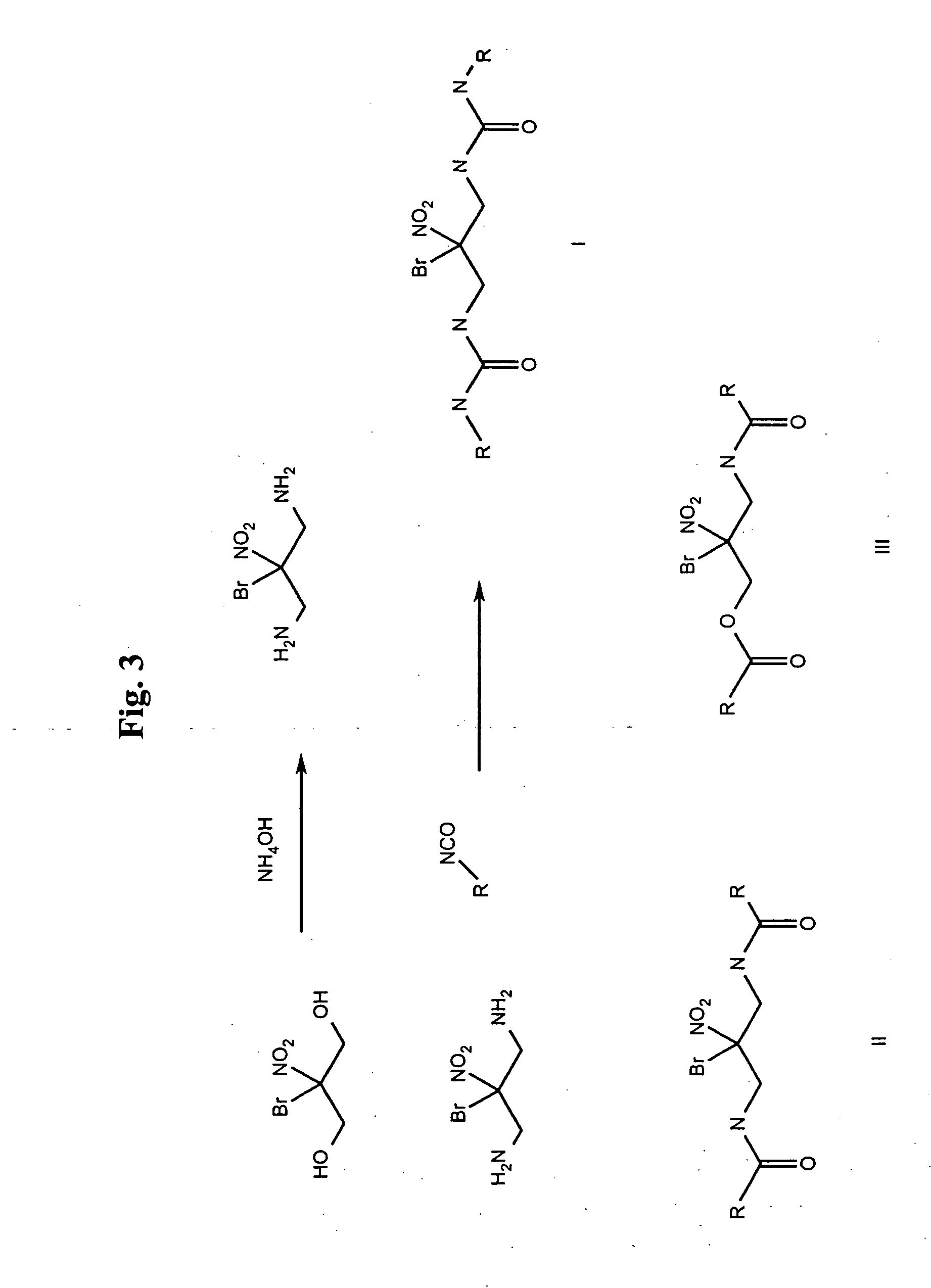Polymers with antimicrobial, bioresistant and fungal resistant properties
a technology of bioresistance and antifungal properties, applied in the field of polymer-containing polymers, can solve the problems of marine coatings and paints suffering a failure mode, destroying the coating completely, and tin, mercury, lead and other heavy metals in coatings are illegal in most developed world countries
- Summary
- Abstract
- Description
- Claims
- Application Information
AI Technical Summary
Benefits of technology
Problems solved by technology
Method used
Image
Examples
example 1
Urethane
[0045] 6 g BNPD were desolved in 14 g γ-Butyrolacton (BLO) with strong mixing. In these 100 g urethane quality castor-oil was added also with strong mixing. Then into this mixture, 42 g aromatic isocyanate Bayer Mondur XP-744 was added drop by drop over twenty minutes, followed an additional 20 minutes of strong mixing. This prepolymer urethane of the castor-oil / BNPD can be called T-31BR.
[0046] To 39 g of Chemoddities HP70 acryl polyole, 0.12 g Eagle Sales FB 100 Defoamer, and 0.12 g Eagle Sales FX-6 slip Aid were added 15 g T-31BR. This mixture can be called componet I. To componet I was added 11 g Bayer Mondur XP-744 flavour TIC isocyanate prepolymer and 10 g BLO. The BLO was to improve flow. A sample was taken off as film, which was an excellent clear urethane layer.
[0047] The acrylic urethane layer contained 0.85% BNPD.
example 2
Urethane
[0048] 150 g of BNPD was dissolved in 150 g BLO. To 150 g of this solution was added 270 g Bayer Mondur XP-744 and heated to 150 F and held for 30 minutes. The BNPD containing isocyanate functional cross-linker was allowed to cool to room temperature.
[0049] To 25 g of the BNPD containing isocyanate cross-linker was added 30 g Chem-oddities HP70 acrylic polyol with strong mixing. This was drawndown to yield a clear, tack free urethane film that contained 9.9% BNPD.
example 3
Urethane
[0050] 10 g of BNPD was dissolved in 15 g BLO. To this solution was added 18 g Bayer Mondur XP-744 and mixed. To this solution was added 0.1 g Troymax 16% Zinc catylst. As soon as heat was seen to be evolved, the mixture was drawndown. The resulting, tack-free urethane film contained 35.7% BNPD.
PUM
| Property | Measurement | Unit |
|---|---|---|
| water insolubility | aaaaa | aaaaa |
| soluble | aaaaa | aaaaa |
| thickness | aaaaa | aaaaa |
Abstract
Description
Claims
Application Information
 Login to View More
Login to View More - R&D
- Intellectual Property
- Life Sciences
- Materials
- Tech Scout
- Unparalleled Data Quality
- Higher Quality Content
- 60% Fewer Hallucinations
Browse by: Latest US Patents, China's latest patents, Technical Efficacy Thesaurus, Application Domain, Technology Topic, Popular Technical Reports.
© 2025 PatSnap. All rights reserved.Legal|Privacy policy|Modern Slavery Act Transparency Statement|Sitemap|About US| Contact US: help@patsnap.com



